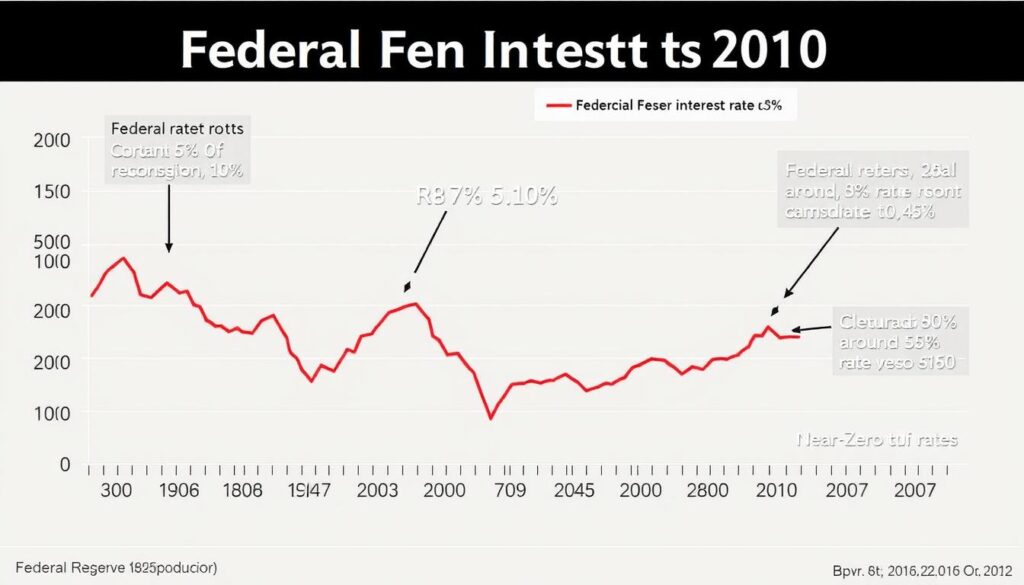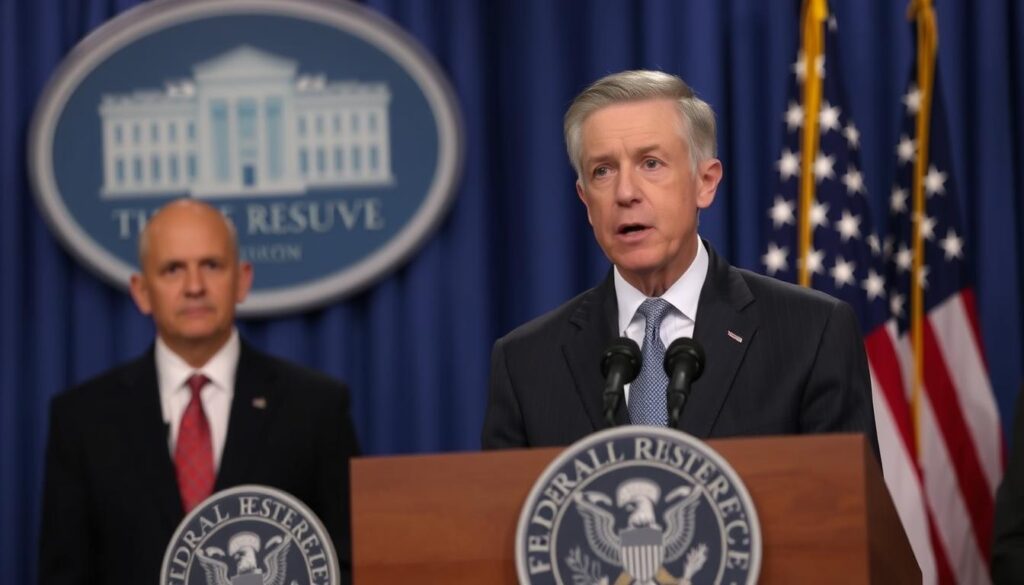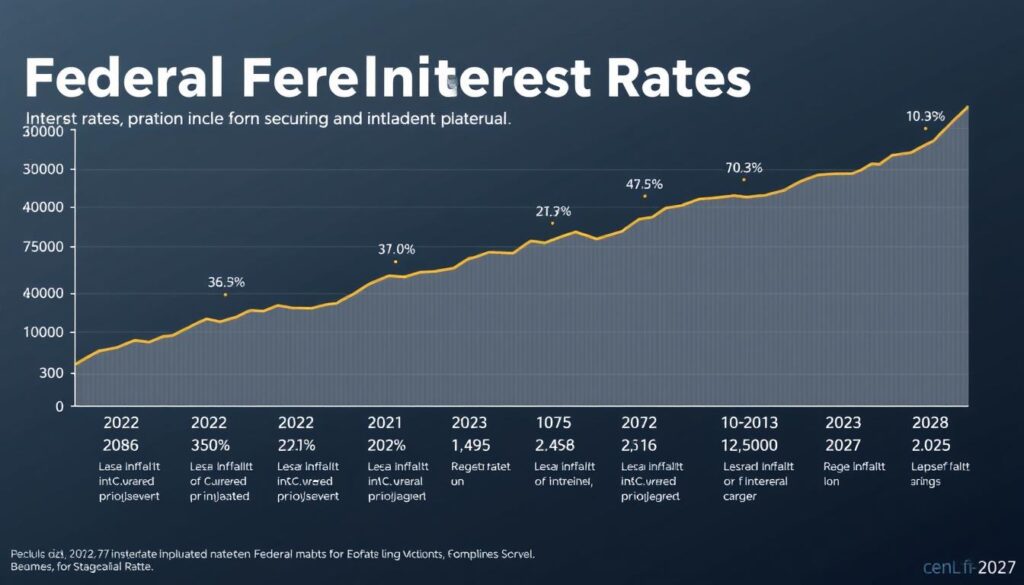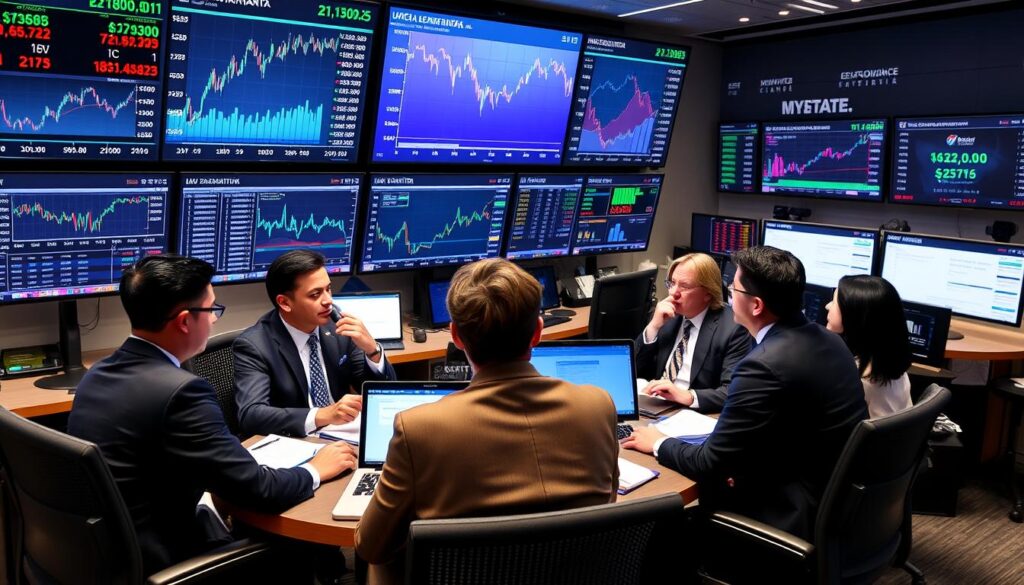The Federal Reserve’s interest rate decisions serve as a powerful economic lever, influencing everything from mortgage rates to stock market performance. As the central bank of the United States, the Fed uses interest rates as a primary tool to fulfill its dual mandate of maintaining price stability and maximizing employment. Understanding how these rates work and their far-reaching implications can help investors, businesses, and consumers make more informed financial decisions in an ever-changing economic landscape.
The Federal Reserve’s interest rate decisions influence the entire U.S. economy
Historical Context: Key Federal Reserve Interest Rate Decisions
The Federal Reserve’s approach to monetary policy has evolved significantly over time, responding to various economic challenges. By examining past rate decisions during critical periods, we can better understand the Fed’s current strategy and potential future actions.

2008 Financial Crisis Response
During the 2008 financial crisis, the Federal Reserve implemented unprecedented monetary policy measures. The central bank slashed the federal funds rate from 5.25% to nearly zero between September 2007 and December 2008. This aggressive approach aimed to stabilize financial markets, increase liquidity, and prevent economic collapse. The Fed also introduced quantitative easing programs, purchasing mortgage-backed securities and Treasury bonds to further stimulate the economy.
Post-Crisis Normalization (2015-2018)
After maintaining near-zero interest rates for seven years, the Fed began a gradual normalization process in December 2015. Under Chair Janet Yellen and later Jerome Powell, the central bank implemented a series of measured rate hikes, bringing the federal funds rate to a range of 2.25-2.5% by December 2018. This cautious approach reflected the Fed’s desire to prevent inflation while supporting continued economic growth.
COVID-19 Pandemic Emergency Measures
When the COVID-19 pandemic triggered a global economic crisis in March 2020, the Federal Reserve responded swiftly by cutting interest rates to near-zero levels again. This emergency action, combined with massive asset purchases and lending programs, helped prevent financial market collapse and supported economic recovery. The Fed maintained this accommodative stance until inflation concerns emerged in 2022.

Federal Reserve Chair Jerome Powell announcing emergency measures during the COVID-19 pandemic
Economic Impact of Federal Reserve Interest Rates
Federal Reserve interest rates create ripple effects throughout the economy, influencing everything from consumer spending to business investment decisions. Understanding these relationships helps explain why rate changes receive such intense scrutiny from markets and media.
Inflation Control
The Fed raises interest rates to combat inflation by making borrowing more expensive, which reduces spending and cools economic activity. Conversely, it lowers rates to stimulate growth when inflation is too low. This delicate balancing act aims to maintain price stability while supporting economic growth.
Employment Effects
Interest rate decisions directly impact job markets. Lower rates encourage businesses to expand and hire more workers. Higher rates can slow hiring but may be necessary to prevent economic overheating. The Fed’s dual mandate requires balancing inflation control with maximizing employment.
Market Influence
Financial markets react strongly to Federal Reserve interest rate announcements and forward guidance. Stock markets typically respond positively to rate cuts and negatively to increases. Bond prices move inversely to interest rates, creating significant portfolio implications for investors.
Consumer Impact of Federal Reserve Interest Rates

Mortgage and Loan Rates
When the Federal Reserve adjusts its benchmark rate, mortgage rates typically follow similar patterns. A 1% increase in the federal funds rate can translate to approximately 0.7-1% higher mortgage rates. This directly affects housing affordability and monthly payments for homebuyers. Auto loans, personal loans, and credit card interest rates also respond to Fed policy changes.
Savings and Retirement
Interest rate changes affect savers and retirees significantly. Higher rates benefit those with savings accounts, certificates of deposit, and fixed-income investments. Lower rates can force retirees to seek riskier investments to maintain income levels. This “reach for yield” phenomenon can create financial vulnerability for those on fixed incomes.
Stay Informed About Rate Changes
Receive timely alerts and expert analysis whenever the Federal Reserve makes interest rate decisions. Our free newsletter delivers insights directly to your inbox.
Current Trends in Federal Reserve Interest Rates (2022-2025)
Recent years have seen significant shifts in Federal Reserve monetary policy as the central bank navigates post-pandemic economic challenges. Understanding these trends provides context for current financial conditions and helps anticipate future developments.

Federal Reserve interest rate trends from 2022-2025 showing inflation-fighting rate hikes
Inflation-Fighting Rate Hikes (2022-2023)
In response to surging inflation that reached 40-year highs, the Federal Reserve implemented one of the most aggressive tightening cycles in its history. Between March 2022 and July 2023, the FOMC raised interest rates eleven times, bringing the federal funds rate from near-zero to a range of 5.25-5.5%. This rapid pace of increases reflected the central bank’s determination to bring inflation back to its 2% target.
| Period | Fed Funds Rate Range | Primary Economic Concern | Market Response |
| Early 2022 | 0.25-0.50% | Rising inflation | Market volatility, bond yields rising |
| Mid 2023 | 5.00-5.25% | Persistent inflation | Stock market correction, inverted yield curve |
| Late 2024 | 4.75-5.00% | Balancing inflation and growth | Market stabilization, yield curve normalization |
| Mid 2025 | 4.25-4.50% | Economic growth, tariff impacts | Cautious optimism, sector rotation |
Pause and Pivot (2024-2025)
As inflation began moderating in late 2023, the Federal Reserve paused its rate hiking cycle to assess the economic impact of its previous tightening. By mid-2024, with inflation showing consistent decline toward target levels, the FOMC began implementing modest rate cuts. The central bank has maintained a cautious approach, balancing inflation concerns with growing signs of economic slowdown.

Current Policy Considerations
The Federal Reserve’s current monetary policy stance reflects several competing factors. While inflation has moderated from peak levels, it remains above the 2% target. Labor markets have cooled but remain relatively tight by historical standards. Global economic uncertainties, including trade tensions and geopolitical conflicts, add complexity to the Fed’s decision-making process. The central bank has signaled its intention to implement additional modest rate cuts while remaining data-dependent.
Future Outlook for Federal Reserve Interest Rates
Predicting the future path of Federal Reserve interest rates requires analyzing economic indicators, Fed communications, and broader market trends. While no forecast is certain, several factors will likely influence monetary policy decisions in the coming years.

Key economic indicators that influence Federal Reserve interest rate decisions
Economic Indicators to Watch
Expert Projections for 2025-2026
Economic forecasters and market participants anticipate a gradual reduction in Federal Reserve interest rates over the next 18-24 months. The median projection from leading economists suggests the federal funds rate will decline to approximately 3.5% by the end of 2026, assuming inflation continues moderating and economic growth remains positive but modest.
“The Federal Reserve faces the challenging task of engineering a soft landing—reducing inflation without triggering a recession. Their gradual approach to rate cuts reflects this delicate balancing act, with policy likely to remain responsive to incoming economic data rather than following a predetermined path.”

Potential Scenarios
What if inflation remains persistently above target?
If inflation proves more stubborn than expected, the Federal Reserve may slow or pause its rate-cutting cycle. This scenario would likely result in higher-for-longer interest rates, potentially constraining economic growth and creating headwinds for both stock and bond markets.
What happens if economic growth slows significantly?
A sharp economic slowdown could prompt the Fed to accelerate rate cuts, potentially returning to near-zero rates if recession risks intensify. In this scenario, the central bank might also consider restarting asset purchases to provide additional stimulus.
How might fiscal policy influence Fed decisions?
Significant changes in government spending, taxation, or trade policy could alter the economic landscape and influence monetary policy. Expansionary fiscal measures might reduce the need for accommodative monetary policy, while restrictive fiscal policy could increase pressure for rate cuts.
Conclusion: Navigating Federal Reserve Interest Rate Changes
Federal Reserve interest rates represent one of the most powerful forces shaping the economic landscape. Their influence extends from Wall Street to Main Street, affecting everything from mortgage payments to retirement savings. By understanding how these rates work and monitoring key indicators, individuals and businesses can better position themselves for changing financial conditions.

Actionable Insights
For Investors
For Consumers
The Federal Reserve’s monetary policy decisions will continue to evolve in response to changing economic conditions. By staying informed about central bank communications, monitoring key economic indicators, and understanding the transmission mechanisms of interest rate changes, stakeholders can make more informed financial decisions in an ever-changing economic landscape.
Download Our Free Guide
Get our comprehensive guide to navigating interest rate changes with practical strategies for investors, homeowners, and consumers.
Understanding Federal Reserve interest rates and their implications isn’t just for economists and financial professionals. With the right knowledge and preparation, individuals and businesses can adapt to changing monetary policy and position themselves for financial success regardless of the interest rate environment.

